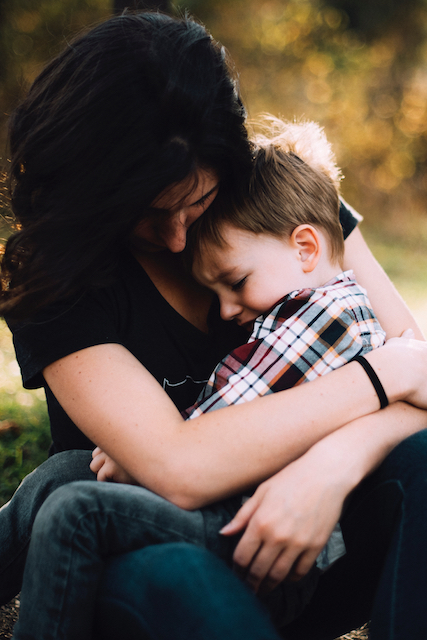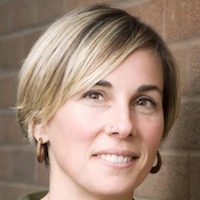One day at the park, my little boy ran up to me holding something cradled in his hands.
“Mommy, look what I found!”
It was a tiny field mouse—and it was dead. We took it down to the little river nearby, and when I said we should bury it, my son cried and cried.
He didn’t want that beautiful creature to go into the ground. And then came the questions: Why did the mouse have to die? What happens to creatures when they die?
That’s how it happens. We have an experience that jars something inside of us; it creates a feeling of dissonance between what we are experiencing and that deeper part of us that cries out, “This isn’t right!”—or, “It shouldn’t be this way!”
It comes from a feeling of disconnection at a time when something else inside us knows we should feel connection. It comes from a feeling of insignificance when our inner self tells us we are deeply significant. There is that feeling of dissonance…and then come the questions.
>> How can I live with the reality that everything dies?
>> How can I live without regret?
>> How can I be the best version of myself?
>> What is my “Self” anyway?
>> How can I feel safe when everything is always changing and feels so unreliable?
>> What is the purpose of my life?
>> Do I have a destiny or am I floating in a meaningless universe?
>> How can I feel content when nothing ever satisfies me for very long?
In fact, these big questions—about the meaning of our lives, where we fit in this vast world, and how we relate to others—arise in all of us through the simple act of living.
Certain experiences—such as a big success or big change, a birth or a death, an unexpected accident, or a quiet walk through a forest—bring us back to a place where the minutia of life falls away, and we can step back from our lives and remember the deeper questions of our existence. This happens all the time
These big questions come with a power that can shake us to our core and inspire us to change our lives. Listening to these questions as they arise in our lives can be the first step in creating our own spiritual map. But where do these questions come from? And if they are so meaningful, why do we so often ignore them?
The fact is that the very act of asking those big life questions can feel incredibly scary. They open up a void inside us. Ultimately, they remind us of all the things we don’t know—and all the things we long to know more than anything. The stakes are high, and the possibility of success in navigating this void can feel slim.
This wasn’t always the case. From our earliest childhood, we’ve reveled in questions. Questions have always been an essential act of life. What is that? Why, why, why? How does this work? What happens when…?
As a mother, I am constantly reminded of our natural propensity to ask questions as a method of understanding ourselves and the world around us.
However, the questions we have as children often have answers. Why does the sun rise in the day and disappear at night? Why do bees love flowers? How do you tell time?
Even when the questions are much more complex—Why do parents go to work? What happens when something dies?—adults usually respond to these questions as if they have definitive answers as well. (Parents work to earn money, or the dead creature goes to heaven, and so on.)
Our journey through school only serves to reinforce our perception of questions as “things that have answers.” There, we also learn that intelligence (which is too often confused with wisdom) is determined by the amount of information (that is, answers) you hold, and learning is the acquisition of more and more “answers,” which can be measured through tests and exams.
From this perspective, questions that have no definitive “answers” are deemed to be irrelevant and not worth asking. We are not encouraged to differentiate between different kinds of questions—“Questions that have answers,” and “Questions that inspire understanding.”
Rabbi Michael Lerner has put it this way:
“There is a limitation of knowledge and understanding built into being a human being…[so] these are not answers but only responses…the difference is this: an answer seeks to dissolve the question; a response recognises the ongoing validity of the question and seeks to remain in connection with it.”
Rainer Maria Rilke called it “living in the question.”
Yet, living in this space of uncertainty is perhaps the most difficult aspect of our spiritual journey. As Pema Chödrön explains in her book, Start Where You Are:
“We usually try to get ground under our feet. It’s as if you were in a spaceship going to the moon, and you looked back at this tiny planet Earth and realised that things were vaster than any mind could conceive, and you just couldn’t handle it, so you started worrying about what you were going to have for lunch.”
There are many methods we employ to push these questions away. In today’s world of relativism and valuing subjective experience over concepts of objective reality, one response we often hear (and often use ourselves) is that these big questions don’t really have answers. Another response is that we just don’t know and will never know. Both of these responses end with: so why bother asking? These responses shut down big questions before we get too close to feeling the void.
Another common response is that we already know.
What is our purpose? Answer: to work, participate in society, earn our way, and support our family.
How can we find happiness? Answer: try to seize the day and enjoy as much of life as we can, while using entertainment, social media, drinking, and so on to anesthetize us when life gets rough.
These are the answers we think we’ve found—and it’s not that they are completely wrong. However, often these are intellectual answers that are not truly felt or understood. They do not fill us with a deep understanding that gives us peace of mind, and they do not solve the problem of emotional dissonance between our experience and what our inner self feels should be true. And so, these so-called “answers” ring hollow in our ears.
The next step toward creating our own spiritual map is to simply to allow ourselves to “live in the question.”
Pema Chödrön writes:
“This moving away from comfort and security, this stepping out into what is unknown, uncharted and shaky—that’s called enlightenment, liberation.”
We must search the wisdom traditions for clues, for certainly, we are not alone on our journey and should look to others who have come before us and pointed the way. But, as the famous Zen Kōan warns, “The finger that points to the moon is not the moon,” and we must always contemplate this wisdom through our own experience.
As the Buddha reminded us, we all have Buddha nature. We already have everything we need to learn from life and free ourselves from our misperceptions that lead us down the paths of dissatisfaction and suffering. This is the journey and the practice of creating our own spiritual map as we walk the path of life.
~
Relephant:
4 Inspiring Pema Chodron Quotes to Help You Through Any Day.
Pema Chodron: This is the Most Important Thing.
~
Author: Sarah Beth Hunt
Image: Flickr/riccardo alescio; Unsplash
Editor: Yoli Ramazzina
Copy editor: Travis May
Social editor: Callie Rushton











Read 1 comment and reply